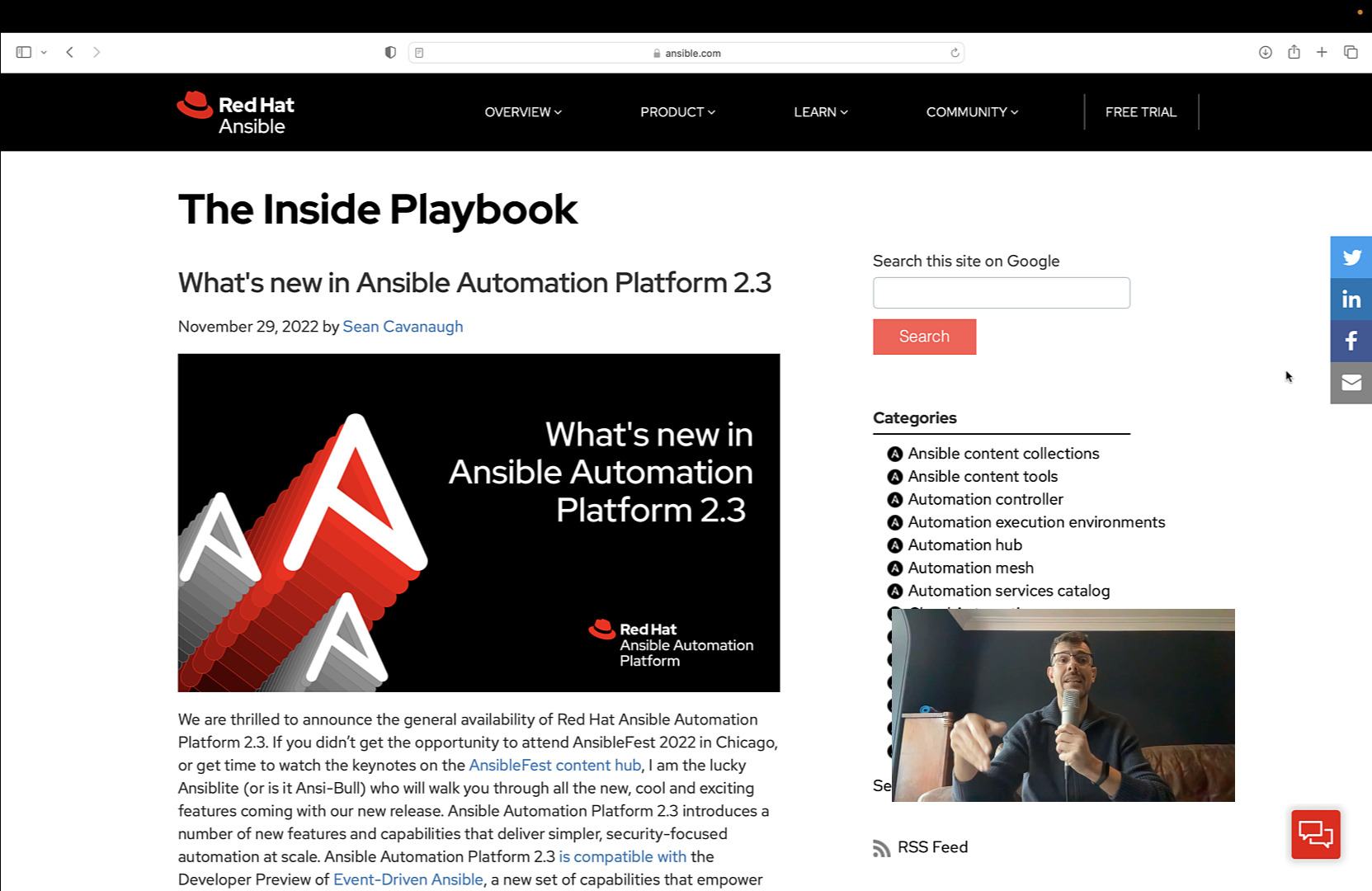Hello everyone and welcome to the latest Ansible Automation news from Ansible Pilot.
Today, we’re diving into the exciting updates of Ansible Automation Platform 2.3, released on November 29, 2022. For those new to the Ansible world, Ansible Automation Platform (AAP) is the enterprise-grade version of Ansible, offering premium support and additional features from Red Hat. This release continues Red Hat’s commitment to enhancing automation capabilities, following the AAP 2.2 release in May 2022.
Key Highlights of Ansible Automation Platform 2.3
Enhanced Security with Trusted Automation Supply Chain:
- Ansible Trusted Collections: Now available from the trusted registry, ensuring downloaded content is validated with a GPG key to prevent tampering.
- ansible-sign Utility: A new open-source tool for signing and verifying your code, enhancing security and integrity.
New Event-Driven Architecture:
- This innovative feature allows automation to be triggered by events rather than on-demand or scheduled runs. The new “RuleBook” system opens up exciting possibilities for Infrastructure as Code (IaC) automation.
Enterprise Features:
- Enterprise LDAP Integration: Now supports role-based access control, a much-requested feature for enterprise environments.
- Automation Hub Improvements: Includes support for high availability and on-premise automation catalog, as well as RHEL9 support.
Container-Based Architecture Refinements:
- The platform continues to evolve with its container-based architecture, allowing Ansible to run in a containerized environment and scale across Kubernetes clusters. This includes updates to
ansible-builderfor creating custom execution environments.
- The platform continues to evolve with its container-based architecture, allowing Ansible to run in a containerized environment and scale across Kubernetes clusters. This includes updates to
Additional Updates
- Automation Hub Content: The platform now includes certified and signed content, providing assurance that downloaded resources are from trusted suppliers.
- Event-Driven Automation: This new architecture shifts automation from being triggered manually or on a schedule to reacting to specific events, potentially revolutionizing how infrastructure is managed.
Conclusion
Ansible Automation Platform 2.3 brings a host of enterprise-focused features, enhancing security with trusted content signing and introducing an event-driven architecture for more responsive automation. These updates align with Red Hat’s strategy for multi-cloud environments and offer significant improvements for enterprise users.
Thank you for tuning in. Stay updated with the latest in Ansible Automation and continue exploring the innovative features of Ansible Automation Platform. See you in the next Ansible Pilot adventure!
For more details, visit the official Red Hat blog post.
Conclusion
Ansible Automation Platform 2.3 is a robust update with a focus on enterprise needs, featuring improved security, event-driven automation, and enhanced container support. Keep an eye on these developments to leverage Ansible’s full potential in your automation strategy.
Thank you for watching, and have a great day from Ansible Pilot!
Subscribe to the YouTube channel, Medium, and Website, X (formerly Twitter) to not miss the next episode of the Ansible Pilot.Academy
Learn the Ansible automation technology with some real-life examples in my
Udemy 300+ Lessons Video Course.

My book Ansible By Examples: 200+ Automation Examples For Linux and Windows System Administrator and DevOps

Donate
Want to keep this project going? Please donate
